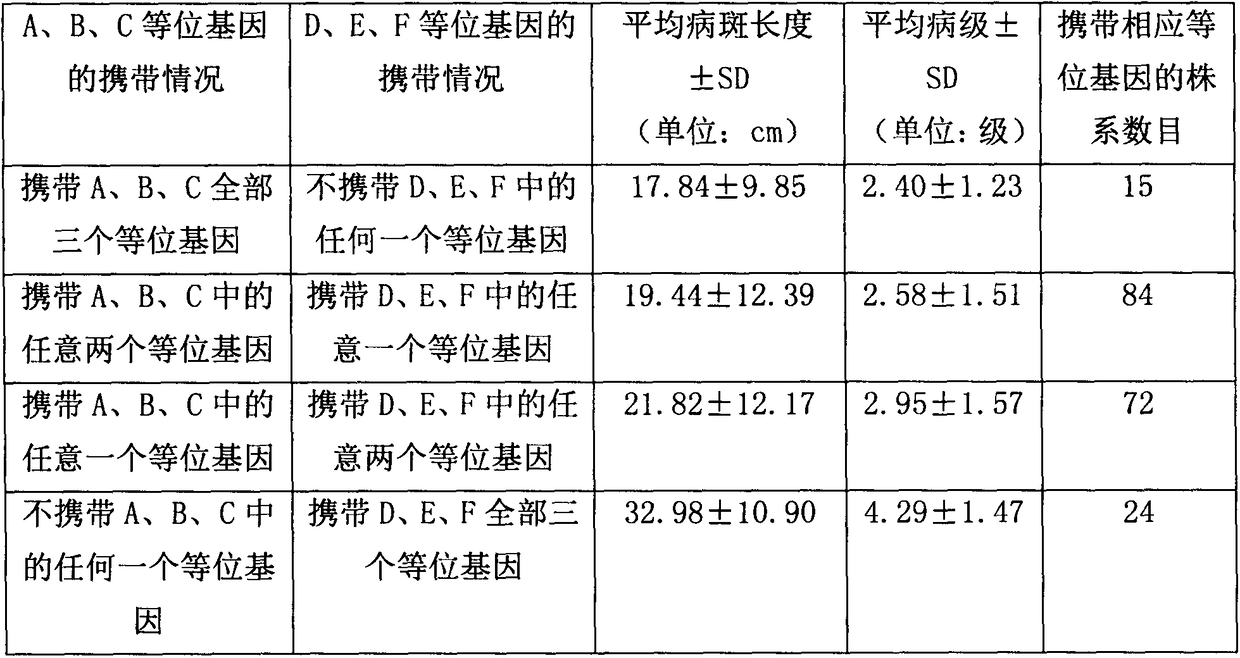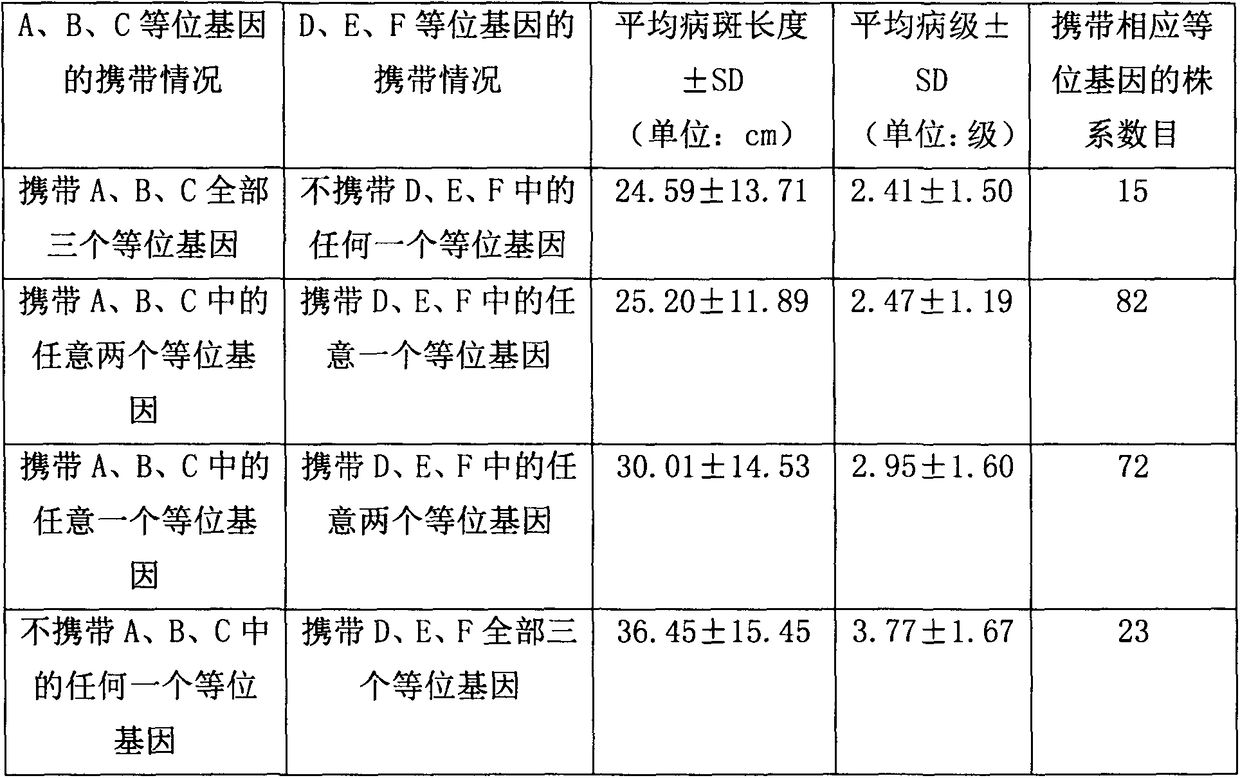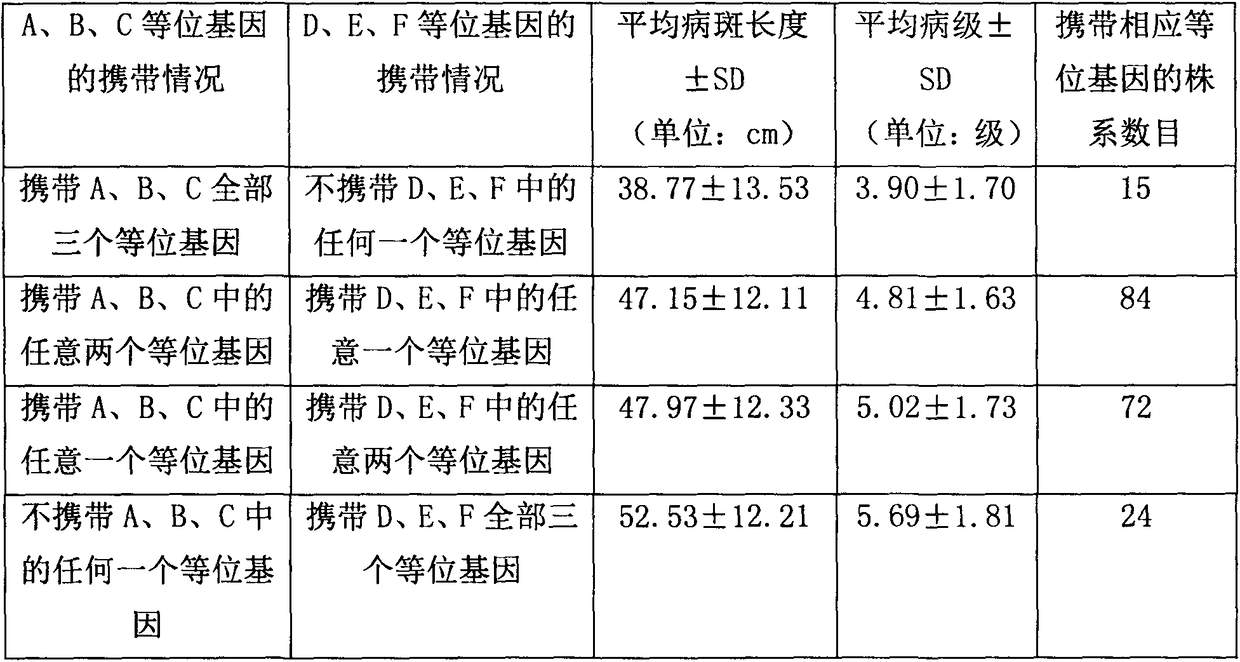Method for polymerizing three banded sclerotial blight resistance genes of Lemont and YangDao No.4
A resistance gene, sheath blight technology, applied in the direction of biochemical equipment and methods, microbial measurement/inspection, etc., can solve the problems of not many, sheath blight resistance reduction, etc.
- Summary
- Abstract
- Description
- Claims
- Application Information
AI Technical Summary
Problems solved by technology
Method used
Image
Examples
Embodiment 1
[0008] Example 1: Application of D715, D804, and D1133 markers in the F9 generation segregating population of the hybrid combination of rice variety Lemont and rice variety Yangdao No. 4.
[0009] 1. The rice variety Lemont was used as the female parent, and the rice variety Yangdao 4 was used as the male parent to cross and construct an F9 generation segregating population (Lemont is a japonica rice variety from the United States, Yangdao 4 is an indica rice variety from Jiangsu, Lemont and Yangdao No. 4 was provided by the National Medium-term Bank of Rice Germplasm Resources of China National Rice Research Institute). This F9 segregation group including 219 strains was sown at the test site of China National Rice Research Institute in Fuyang District, Hangzhou City in May 2015.
[0010] 2. Use the markers D715, D804, and D1133 to perform PCR detection on each of the 219 strains of the recombinant inbred line separation population. Name the band pattern of D715 amplified Yangdao ...
Embodiment 2
[0015] Example 2: Application of the D715, D804, and D1133 markers in the F11 segregating population of the hybrid combination of the rice variety Lemont and the rice variety Yangdao No. 4.
[0016] 1. The rice variety Lemont was used as the female parent, and the rice variety Yangdao No. 4 was used as the male parent to cross the F11 generation segregation population (Lemont is a japonica rice variety from the United States, Yangdao No. 4 is an indica rice variety from Jiangsu, Lemont and Yangdao No. 4 was provided by the National Rice Germplasm Bank of China National Rice Research Institute). This F11 segregating population including 219 strains was sown in the experimental farm of China National Rice Research Institute in Fuyang District, Hangzhou City in May 2016.
[0017] 2. Use the markers D715, D804, and D1133 to perform PCR detection on each of the 219 strains of the recombinant inbred line separation population. Name the band pattern of D715 amplified Yangdao No. 4 as A, n...
Embodiment 3
[0022] Example 3: Application of the D715, D804, and D1133 markers in the F13 generation segregating population of the hybrid combination of rice variety Lemont and rice variety Yangdao No. 4.
[0023] 1. The rice variety Lemont was used as the female parent, and the rice variety Yangdao No. 4 was used as the male parent to cross and construct the F13 generation segregating population (Lemont is a japonica rice variety from the United States, Yangdao No. 4 is an indica rice variety from Jiangsu, Lemont and Yangdao No. 4 was provided by the National Rice Germplasm Bank of China National Rice Research Institute). This F13 segregating population including 219 strains was sown in the experimental farm of the China Rice Research Institute in Fuyang District, Hangzhou City in May 2017.
[0024] 2. Use the markers D715, D804, and D1133 to perform PCR detection on each of the 219 strains of the recombinant inbred line separation population. Name the band pattern of D715 amplified Yangdao N...
PUM
 Login to View More
Login to View More Abstract
Description
Claims
Application Information
 Login to View More
Login to View More - R&D Engineer
- R&D Manager
- IP Professional
- Industry Leading Data Capabilities
- Powerful AI technology
- Patent DNA Extraction
Browse by: Latest US Patents, China's latest patents, Technical Efficacy Thesaurus, Application Domain, Technology Topic, Popular Technical Reports.
© 2024 PatSnap. All rights reserved.Legal|Privacy policy|Modern Slavery Act Transparency Statement|Sitemap|About US| Contact US: help@patsnap.com










